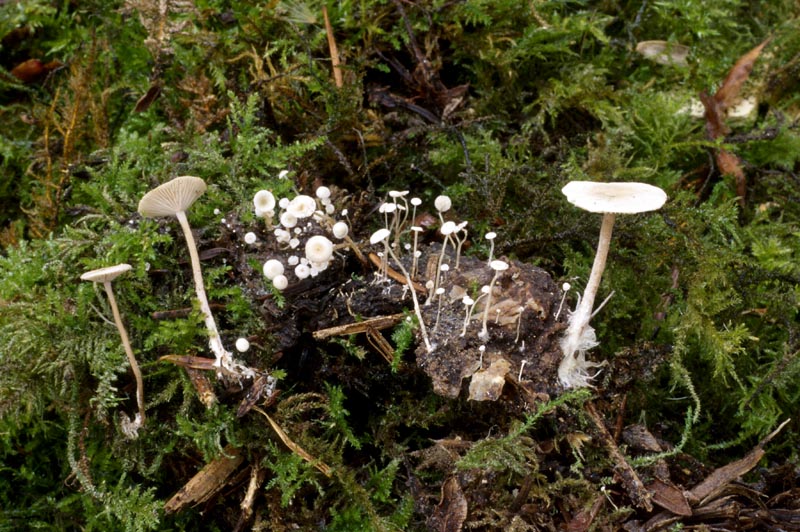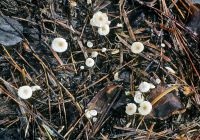Conservation Status: Not of concern
The residual Collybia is made up of three very small (caps up to about 20 mm (0.8 in.)) species: C. cirrhata without sclerotia, usually associated with decaying mushrooms; C. cookei (Bresadola) Arnold, arising from yellow, irregularly shaped sclerotia, sometimes with decaying mushrooms but also in soil and litter; and C. tuberosa (Bulliard: Fries) P. Kummer, with reddish brown, apple seed-like sclerotia, usually associated with decaying mushrooms. All have minute to small, whitish, convex to flattened caps, narrow white gills, and thin whitish stipes that are often hairy below or have white strands associated with the sclerotia or substrate. The spores are white, small, smooth, and non-amyloid. These fungi are common, often in large troops, throughout western forests.
Sources: Trudell, Steve and Joe Ammirati. Mushrooms of the Pacific Northwest. Portland, Timber Press, Inc. 2009.
PNW Herbaria: Specimen records of Collybia cirrhata in the Consortium of Pacific Northwest Herbaria database.
CalPhotos: Collybia cirrhata photos.






